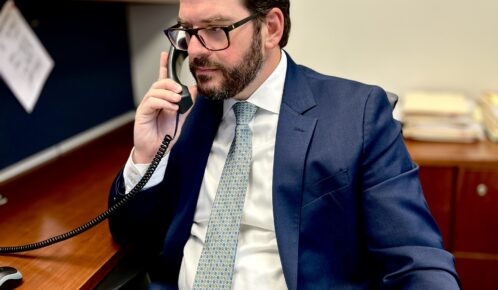A tracheotomy is a surgical procedure, whereby a doctor opens up the windpipe (or trachea) in an emergency situation. A tracheotomy may be performed for several reasons, including a blocked windpipe, a swollen windpipe, severe injury to the neck or mouth, paralysis of the throat muscles, or a tumor.
There are two types of tracheotomies. One type of tracheotomy is performed in emergency situations when a doctor makes an incision in a thin part of the voice box (or larynx) in which a tube is inserted and connected to an oxygen bag. The other type of tracheotomy is performed in during a surgery and takes more time to perform. The surgeon first makes an incision in the skin of the neck that lies over the trachea and then separates the neck muscles and the thyroid gland. Thereafter, the surgeon cuts into the walls of the trachea to insert a metal or plastic tube which acts like a windpipe and allows the person to breathe.
Tracheotomies should only be used in critical situations, when medically necessary, due to the serious risks associated with tracheotomies. Some of the risks include:
- Severe bleeding
- Damage to the voice box or esophagus
- Windpipe damage
- Bacterial infections
- Inability of the tracheotomy opening to close
- Death
Tracheotomies are particularly risky for children, smokers, alcoholics, obese adults, the elderly, persons with chronic respiratory infections, and persons taking certain medications.
If a doctor or surgeon performs an unnecessary tracheotomy, he or she could be liable for medical malpractice. As we reported, several doctors and executives at Sacred Heart Hospital in Chicago have been charged with a orchestrating a massive scheme to defraud Medicare and Medicaid by collecting kickbacks and performing unnecessary tracheotomies.
The Chicago tracheotomy malpractice attorneys at Ankin Law Office, LLC focus on representing the victims of medical malpractice who have been injured or died as a result of an unnecessary medical procedure, such as an unnecessary tracheotomy. Because we focus on representing the victims of medical malpractice, we can advise you of your legal rights and advocate to protect your interests. We will work tirelessly to get you the financial recovery that you deserve.
If you or a loved one has received an unnecessary tracheotomy or other unnecessary medical procedure, contact our office at (312) 874-7529 to schedule a free consultation with one of our knowledgeable Chicago medical malpractice attorneys.



